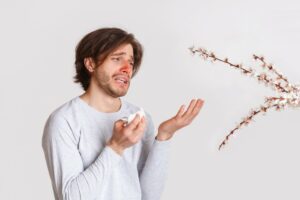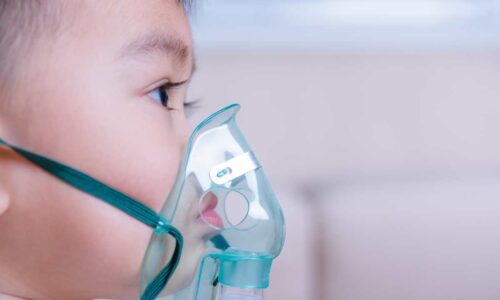Why do plants trigger my allergies? |

Allergies develop when the immune system overreacts to substances in the environment, such as the pollen of trees, grasses, weeds, or mold spores. Allergy symptoms, triggered by the release of histamine in the body, include itching, sneezing, hives, and wheezing. Seasonal allergic rhinitis or “hay fever,” is common this time of the year because of the amount of pollen in the air. Common hay fever symptoms are sneezing, stuffiness, runny nose, and watery eyes. Fortunately, there are a number of self-care measures that can help with springtime allergies.
Reducing pollen exposure. For seasonal allergies caused by plants and trees, it is best to try to stay indoors when pollen counts are high. Information on current pollen levels can be obtained from the National Allergy Bureau website. During allergy season, the best time for outdoor activities is after a rain, which helps clear pollen from the air. To reduce exposure to outdoor pollen, keep windows shut and the air conditioner on. Don’t mow lawns or rake leaves because it stirs up pollen and molds. Avoid hanging sheets or clothes outside to dry. If you work outside, wear a dust mask.
Keeping indoor air allergy-free. You won’t be able to eliminate every allergen from your home, but you can reduce your exposure to them. Use a high-efficiency particulate air (HEPA) filter in the bedroom. Wood, tile or vinyl works best for floor surfaces since dust, mold, and pollen can be removed more thoroughly than with carpet. Use of mattress and pillow covers can decrease the exposure to dust mites, since many hay fever sufferers are also allergic to dust mites. Indoor pets should be bathed regularly and kept off of the bed. Remove clothes you’ve worn outside. Bathe and shampoo hair daily before going to bed to remove pollen from hair and skin.
Over-the-counter (OTC) Antihistamines. All antihistamines, whether OTC or prescription, work by blocking the release of histamine in the body. They are best used when taken prior to the development of symptoms, not after symptoms are present. OTC antihistamines include diphenhydramine (Benadryl), chlorpheniramine (Chlor-Trimeton), fexofenadine (Allegra), loratadine (Claritin), and cetirizine (Zyrtec).
Cromolyn sodium (NasalCrom) Nasal spray. Like antihistamines, this OTC nasal spray prevents the release of histamine and helps with nasal symptoms of hay fever. It is most effective when taken before symptoms start and may need to be used several times a day.
Nasal irrigation. Several studies have demonstrated the effectiveness of nasal irrigation in reducing symptoms of allergic rhinitis. Nasal irrigation can be performed with a neti pot, bulb syringe or squeeze bottle to flush out nasal passages with saline (salt) solution. There have been some reports of infection caused by contaminated neti pots. To prevent this, it is important to wash the irrigation device after each use and allow it to air dry.
Decongestants. Decongestants, such as pseudoephedrine (e.g. Sudafed), help with symptoms of nasal congestion but do not treat the underlying allergic reaction. Decongestants should not be taken long-term because they may affect blood pressure or urination. Decongestant nasal sprays such as Afrin or Neosynephrine should not be used for more than 3 or 4 days at a time for allergies in order to avoid rebound nasal congestion.
Herbal remedies. Butterbur (Petasites hybridus, 500 mg per day) – appears to have some effectiveness in preventing seasonal allergy symptoms. Two small studies demonstrated that an extract of butterbur was as effective as the antihistamines, Zyrtec or Allegra. As with medications, herbal products have side effects and can interact with other medications or supplements.
When self-care measures fail. There are a number of treatments for managing seasonal allergy symptoms available by prescription or on doctor’s recommendation. These include:
- Nasal steroids, fluticasone (Flonase), budesonide (Rhinocort), mometasone (Nasonex) and triamcinolone (Nasacort).
- Prescription antihistamines, desloratadine (Clarinex) and the nasal spray azelastine (Astelin),
- Leukotriene modifiers. Montelukast (Singulair) is a prescription tablet taken to block the action of leukotrienes – immune system chemicals that cause allergy symptoms such as excess mucus production.
- Allergen immunotherapy (“allergy shots”). Testing to determine specific allergens responsible for symptoms is necessary prior to undergoing desensitizing injections.
If you have any more questions just Ask Hanna, our health advisors are here to help.
Image: ©Shutterstock / Prostock-studio








